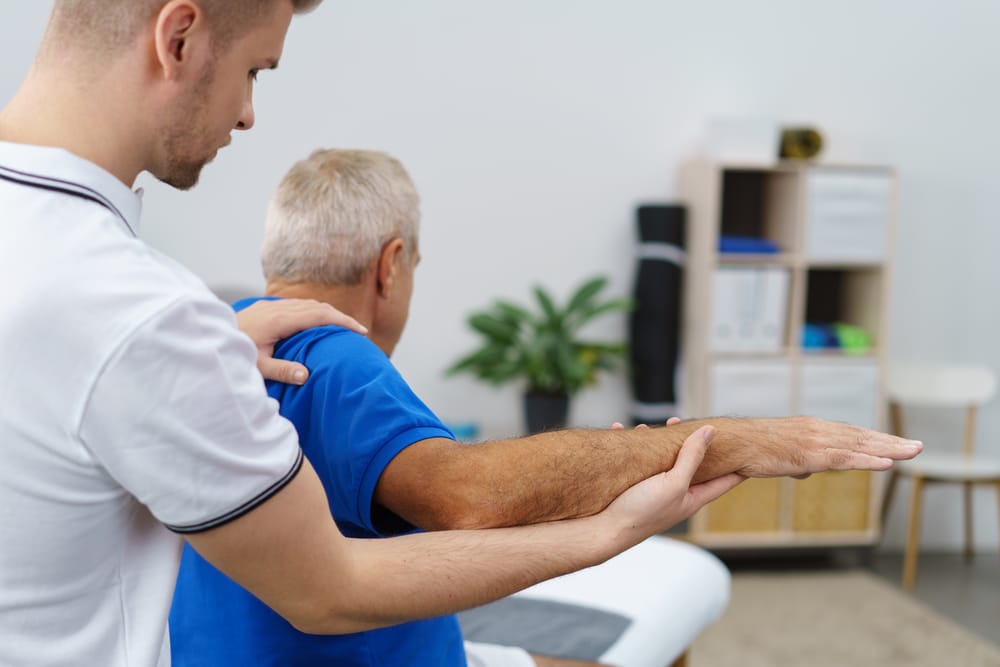
A shoulder dislocation is painful at any age, but age greatly influences how the joint responds and heals. Younger patients often experience repeat dislocations, while older patients face unique complications. Understanding these differences helps you know what to expect and what treatment may be right for you.
At Union County Orthopaedic Group, a Division of OrthoNJ, our board-certified orthopedic surgeons bring decades of experience treating complex injuries and conditions. Dr. Richard P. Mackessy, a board-certified orthopedic surgeon with over 30 years of experience, Dr. Christopher Ropiak, fellowship-trained in shoulder and elbow surgery, and Dr. Mina Abdelshahed, an orthopedic specialist in sports-related injuries, provide advanced care for dislocations, rotator cuff tears, and labral injuries.
Shoulder Dislocation in Your 20s
Younger patients, especially athletes, are more likely to re-dislocate after the first injury. The reason is that younger tissue often stretches but does not heal tightly, resulting in an unstable joint. Recurrent dislocations can damage the labrum, ligaments, and even bone.
Common risks after a dislocation in your 20s include:
- Recurrent instability: High chance of repeat dislocation without proper treatment.
- Labral tears: Damage to cartilage lining the socket.
- Sports limitations: Activities like basketball, football, or swimming increase the risk of repeat injury.
- Early arthritis: Long-term instability can lead to cartilage wear and the development of arthritis.
Young adults often need surgical stabilization to restore shoulder stability and prevent ongoing damage. Early treatment supports long-term shoulder health.
Shoulder Dislocation in Your 50s
Older patients typically face fewer repeat dislocations, but the injury carries different concerns. The primary concern is damage to the tendons and muscles surrounding the shoulder, which become less elastic with age. Recovery can also take longer due to natural changes in bone density and tissue quality.
Common risks after a dislocation in your 50s include:
- Rotator cuff tears: Tendon injuries are frequent and may require repair.
- Fractures: Bone around the shoulder socket may break during the dislocation.
- Stiffness and arthritis: Limited motion and joint wear often complicate the recovery process.
- Longer rehabilitation: Healing takes more time and often requires focused physical therapy.
Older adults may not need surgery for stability, but often need treatment for rotator cuff tears or fractures. A customized recovery plan ensures the best outcome.
Comparing Recovery Needs by Age
The approach to treatment depends on the patient’s age, activity level, and the health of the affected tissue. Here is how recovery needs often differ:
- In your 20s: Focus on preventing recurrence through surgical stabilization and guided rehab.
- In your 50s: Focus on tendon healing, arthritis management, and restoring mobility.
- At any age: A structured physical therapy plan is essential to rebuild strength and stability.
Recognizing these differences helps patients prepare mentally and physically for recovery. Your orthopedic team will guide you through the best plan for your stage of life.
Find the Right Shoulder Care in Union County
If you experience a shoulder dislocation, expert treatment can protect long-term joint function. Call 908-486-1111 today to schedule an appointment in Union, Linden, or Clark and start your recovery with confidence.